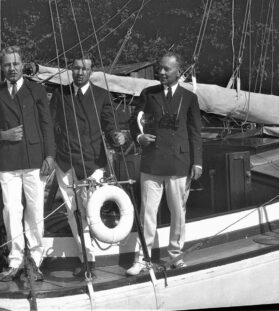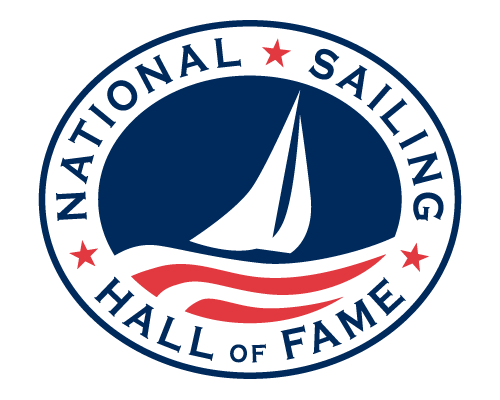PREVIOUSNEXT

Deceased , Historic
John
Barnes
1905 - 1974
Excerpted from the nomination of Barnes, put forth by the International Lightning Class: John S. Barnes is credited for his contributions as an early promotor of one-design sailing and for bringing high production boat building techniques to the building of one-design sailboats. In 1932 John Barnes acquired an old boat building company and expanded it into the Skaneateles Boat Company. The introduction of the Snipe Class the year before and its subsequent explosive growth convinced Barnes that a market existed for small sailboats larger than could be supplied by the traditional building of one boat at a time. The canoe industry had developed manufacturing techniques where canoes were popped off a solid mold in a day and at a lower cost than traditional methods. He would adopt this molding technique first in the Comet Class. Skaneateles streamlined the process to build at the same rate. The company would build well over a 1000 Comets. In 1938 Barnes would work with Olin Stephens to develop the Lightning Class. Again, the company was able to build a boat a day and would build over 1300 in a few short years. Again, a solid mold was developed to achieve this high production rate. This old mold was rescued in 2018 and is currently on display at the Finger Lakes Boating Museum in Hammondsport NY. In 1940 Barnes would begin building eight-foot-long hot molded Sparkman & Stephens sailing dinghy hulls for Bill Dyer. Existing vacuum molding techniques (Videl Process) required expensive, short-lived, rubber bags for the vacuum process. This expense limited the size of the hulls molded. Barnes improved the process using inexpensive clear cellophane for the bagging. In addition to the cheaper method, the clear bag allowed for inspection of the hull under construction reducing the cull rate significantly. This improvement made larger hulls like the Thistle, Highlander, and the Hurricane (Rhodes 19) to be economically constructed. For this development, Barnes was granted US Patent #2411497, November 26, 1946 “Making Laminated Articles”. With the coming of plastic construction, the wooden boat would be priced out of the market, but Barnes’ bagging method lives on today in modern vacuum bagging of composites. This makes the remarkable Americas Cup boats of today possible. It is easy to see John Barnes as the Henry Ford of sailboat construction. Had his career not been cut short in 1948 by contracting tuberculosis he would have undoubtedly helped pioneer modern fiberglass construction. After Barnes’s departure the Skaneateles Boat Co production collapsed and soon ended. Barnes had proven that the one-design concept allowed for high volume production at lower cost, making sailboats more available to all. We would not see this scale of sailboat production again until the introduction of fiberglass construction.
[searchandfilter id="7549"]
Preserving America’s Sailing Legacy
Engaging Sailing’s Next Generation
Stay Connected to the National Sailing Hall of Fame
